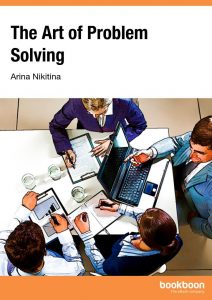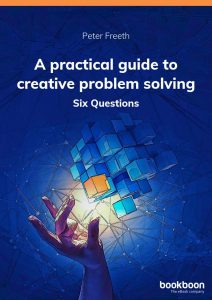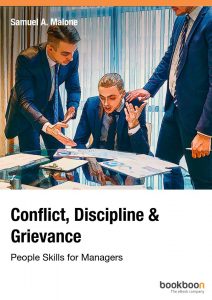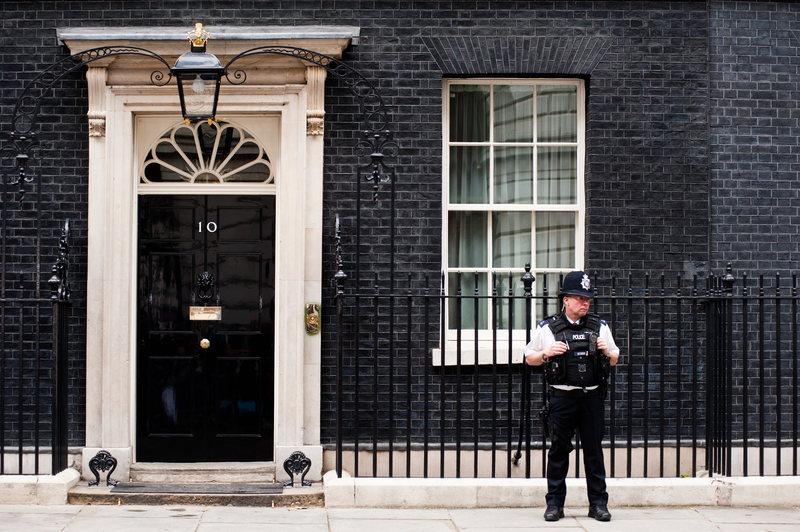Creative problem solving: 4 problem solving techniques

Problems and conflicts are an inevitable part of every employee’s professional and personal lives. Avoiding conflict is neither realistic or beneficial to individuals or businesses alike. Creative problem-solving, a very in-demand skill among hiring managers, means using techniques and skills to brainstorm and come up with unique solutions to the problems life throws at you. Let’s look at 4 problem-solving techniques to help you manage when conflict comes your way.
–Keep the big picture in view
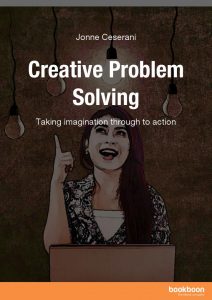 In order to survive both personally and organisationally it is essential that both individuals and organisations develop their capabilities to be responsive and flexible in the face of continuing change. The world of today is important to create the success and profit to fund the world of tomorrow that creates success in the future. Innovation is essential in all aspects of life be it technology, marketing, organisational, cultural, etc. Creative problem solving is the tool to invent new solutions in the world of tomorrow. Keeping the big picture in view refers to looking at all the elements of a problem and how it will impact a situation or organisation as a whole rather than picking out individual effects. Sometimes looking at the situation as one problem can make it easier to find the one solution.
In order to survive both personally and organisationally it is essential that both individuals and organisations develop their capabilities to be responsive and flexible in the face of continuing change. The world of today is important to create the success and profit to fund the world of tomorrow that creates success in the future. Innovation is essential in all aspects of life be it technology, marketing, organisational, cultural, etc. Creative problem solving is the tool to invent new solutions in the world of tomorrow. Keeping the big picture in view refers to looking at all the elements of a problem and how it will impact a situation or organisation as a whole rather than picking out individual effects. Sometimes looking at the situation as one problem can make it easier to find the one solution.
For more on this, check out our eBook Creative Problem Solving free here.
The GROW model
Using the metaphor of a map, think of this first step as you identifying your final destination. It can be helpful, when trying to pinpoint your destination, to ask some clarifying questions. These might include the following: how will you know when you’ve ‘arrived’? What will
be some of the landmarks or markers that will let you know you’re ‘there’? In other words, how will you identify that the issue or problem has been successfully addressed and solved?
R – Your Current Reality
Now that your destination is clear, this next step takes a measure of where you are now – your current place on the map – with all the resources and tools that you’re going to be packing to take along with you. At this stage of planning your trip to your destination, this is a really important and often under-utilized step in the process. You’ll have a ton of information available to you when you really begin to spend some time assessing where you are right now. Think about clarifying, for example, what’s happening in your current reality – the what, when, who, and how often. How do these factors impact your current reality? Are there other goals you have which may either support or conflict with your new destination?
This is also a fantastic opportunity, when looking at your reality now, to identify steps you may already have taken, no matter how small, towards your desired destination.
Think you’ve got what it takes to be a creative problem-solver? Check out #FrictionlessFriday, our weekly newsletter to get creative when it comes to conflict.
O – Options and Obstacles
This third step looks at identifying and clarifying, via brainstorming, your possible routes, along with potential roadblocks on each route to your achieving your goal, arriving at your destination. Using the map metaphor, this step looks at the countryside, the ‘lay of the land,’ between you and your destination. You’re looking for potential routes and the options and obstacles you might find along each one.
So, this step invites you to first brainstorm, without censoring, the various possibilities or routes. There’ll be time later to look at which route makes the most sense. For now, just focus on as many options as possible, even if some don’t make logical sense; you want to use as much creativity as possible to really get your imagination firing on all cylinders. After you’ve spent some time on juicy brainstorming, now you can look at the pros and cons of each potential route.
W – Way Forward or Will
This final step looks at nailing down your plan by looking at the steps you need to now take, given what you’ve discovered in the first three steps, to grow from where you are now, to reach your intended destination. You need to determine which route to take and what your itinerary, step-by-step, will look like. This final step in the process identifies which steps come first on your journey plus how
you’ll keep yourself nourished and motivated along the way. Finally, it’s good to build into this step, times when you’ll review your progress, to ensure you’re still on track to getting to your desired destination. It’s helpful to decide ahead how frequently you should review your map, determine your progress, and fine-tune your route.
Learn more about GROW and many other useful problem-solving models with our free eBook The Art of Problem Solving.
The 6 questions
“Why?” is probably the most common question that you will ask or hear. When we ask “Why?”, we think we’re asking for reasons, but that’s not the case as you will see. When you ask “Why?”, what you actually receive is justifications. Reasons cause a response,
justifications defend it.
How?
How do you know that you have this problem?
What?
“What?” identifies the nature of the problem. What is it? What do we know about it? What shall we call it? What are you doing about it?
Where?
It is important to know if the problem is universal (it happens everywhere) or if it is constrained to a particular place or context. This separates externally triggered problems from those that are caused by internal perception or beliefs.
Who?
Asking who has the problem can be useful in separating people who can effect change from innocent bystanders. Remember too that the people with the problem are not necessarily the people with the resources to solve it.
When?
Time is a great healer. Certainly, difficult situations that you may have experienced in the past seem less of a problem as you move further away from them.
Learn more about the six questions and how to use them to effectively manage conflict with our free eBook A Practical Guide to Creative Problem-Solving here.
The 5 steps to conflict resolution
- Describe objectively the types, sources and causes of the conflict. Visualise the conflict resolution process and the positive outcome you want to achieve and the values you want to retain.
- Ask the other parties how they see the conflict situation and the way they would
like to see it resolved. This is an obvious common-sense approach that is sometimes not taken. Addressing the reasonable wishes of employees is a sensible approach to solving problems in the workplace. - Respond with the appropriate style. Darling et al (2001) reports that these styles are relater, analyser, director, or socialiser.The relater is likely to use empathy when solving interpersonal relationship problems. They are good at co-operating with others. Their sense of trust brings out the best in others.The analyser looks at issues in a systematic way. They like to have the facts before they arrive at conclusions.Directors tend to have a low level of emotion and a high level of assertion. They are often pragmatic, decisive, objective and competitive and tend to resist compromise
in conflict situations.The socialiser is good at human relations while at the same time being assertive. Socialisers are outgoing, optimistic, and enthusiastic and like to be at the centre of things. The appropriate style adopted by a manager depends on the context and could be a mixture of all four. - Jointly agree on how to resolve the conflict. It takes two to settle a dispute and without compromise and give-and-take disputes are unlikely to be settled satisfactorily. Jointly commit on an agreed solution. Agree an action plan and summarise the actions to be taken by each party that will resolve the dispute to each party’s satisfaction.
- Henceforth promise to resolve the conflict sooner. Reflect and learn from the mistakes of the past and your conflict resolution performance.
These are only five of the many steps to creative problem-solving. For more, check out our free eBook Conflict, Discipline & Grievance.
Did you know you could access all our Creative Problem-Solving eBooks and 1,700+ other personal development eBooks for free (no strings attached) for the first 30 days? Sign up for a free trial of Bookboon Premium.
